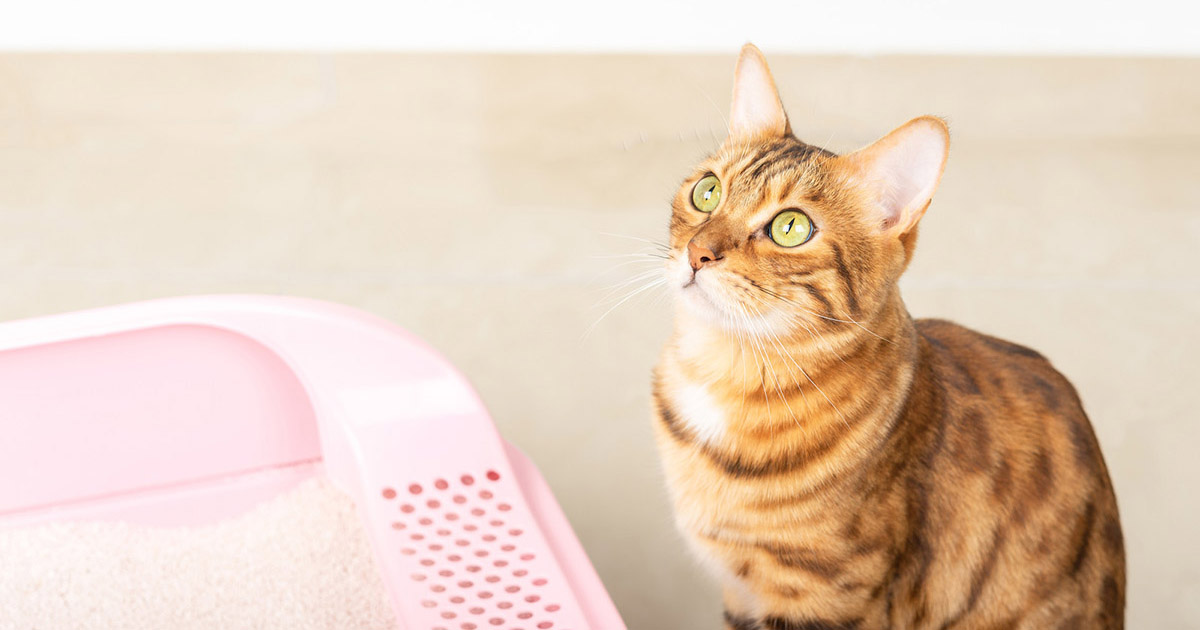Hazards of Flushing Cat Poop Down Your Toilet - Avoid Potential Problems
Hazards of Flushing Cat Poop Down Your Toilet - Avoid Potential Problems
Blog Article
Are you hunting for details on Don’t flush cat feces down the toilet?

Introduction
As pet cat proprietors, it's necessary to bear in mind exactly how we get rid of our feline buddies' waste. While it might seem practical to purge feline poop down the commode, this technique can have harmful effects for both the environment and human health.
Environmental Impact
Purging pet cat poop introduces damaging pathogens and bloodsuckers right into the water, posing a significant risk to marine ecological communities. These contaminants can negatively influence marine life and concession water quality.
Wellness Risks
Along with environmental concerns, flushing feline waste can also posture wellness dangers to people. Cat feces may contain Toxoplasma gondii, a parasite that can cause toxoplasmosis-- a possibly serious health problem, especially for pregnant females and individuals with weakened body immune systems.
Alternatives to Flushing
Luckily, there are safer and extra responsible methods to throw away cat poop. Take into consideration the following choices:
1. Scoop and Dispose in Trash
The most typical approach of throwing away feline poop is to scoop it right into a biodegradable bag and toss it in the garbage. Be sure to utilize a specialized clutter scoop and get rid of the waste immediately.
2. Use Biodegradable Litter
Select eco-friendly pet cat clutter made from products such as corn or wheat. These clutters are environmentally friendly and can be securely dealt with in the trash.
3. Bury in the Yard
If you have a yard, think about burying feline waste in a marked location away from vegetable gardens and water resources. Be sure to dig deep adequate to prevent contamination of groundwater.
4. Install a Pet Waste Disposal System
Purchase a pet dog garbage disposal system particularly created for cat waste. These systems make use of enzymes to break down the waste, lowering odor and ecological impact.
Conclusion
Liable animal possession prolongs past supplying food and shelter-- it likewise entails appropriate waste administration. By avoiding flushing pet cat poop down the toilet and selecting different disposal methods, we can lessen our ecological footprint and safeguard human health and wellness.
Why Can’t I Flush Cat Poop?
It Spreads a Parasite
Cats are frequently infected with a parasite called toxoplasma gondii. The parasite causes an infection called toxoplasmosis. It is usually harmless to cats. The parasite only uses cat poop as a host for its eggs. Otherwise, the cat’s immune system usually keeps the infection at low enough levels to maintain its own health. But it does not stop the develop of eggs. These eggs are tiny and surprisingly tough. They may survive for a year before they begin to grow. But that’s the problem.
Our wastewater system is not designed to deal with toxoplasmosis eggs. Instead, most eggs will flush from your toilet into sewers and wastewater management plants. After the sewage is treated for many other harmful things in it, it is typically released into local rivers, lakes, or oceans. Here, the toxoplasmosis eggs can find new hosts, including starfish, crabs, otters, and many other wildlife. For many, this is a significant risk to their health. Toxoplasmosis can also end up infecting water sources that are important for agriculture, which means our deer, pigs, and sheep can get infected too.
Is There Risk to Humans?
There can be a risk to human life from flushing cat poop down the toilet. If you do so, the parasites from your cat’s poop can end up in shellfish, game animals, or livestock. If this meat is then served raw or undercooked, the people who eat it can get sick.
In fact, according to the CDC, 40 million people in the United States are infected with toxoplasma gondii. They get it from exposure to infected seafood, or from some kind of cat poop contamination, like drinking from a stream that is contaminated or touching anything that has come into contact with cat poop. That includes just cleaning a cat litter box.
Most people who get infected with these parasites will not develop any symptoms. However, for pregnant women or for those with compromised immune systems, the parasite can cause severe health problems.
How to Handle Cat Poop
The best way to handle cat poop is actually to clean the box more often. The eggs that the parasite sheds will not become active until one to five days after the cat poops. That means that if you clean daily, you’re much less likely to come into direct contact with infectious eggs.
That said, always dispose of cat poop in the garbage and not down the toilet. Wash your hands before and after you clean the litter box, and bring the bag of poop right outside to your garbage bins.
https://trenchlesssolutionsusa.com/why-cant-i-flush-cat-poop/

I am just very occupied with Don’t flush cat feces down the toilet and I am hoping you liked the new blog entry. Sharing is good. Who knows, you may just be doing someone a favor. Thanks a lot for taking the time to read it.
Quote & Schedule Report this page